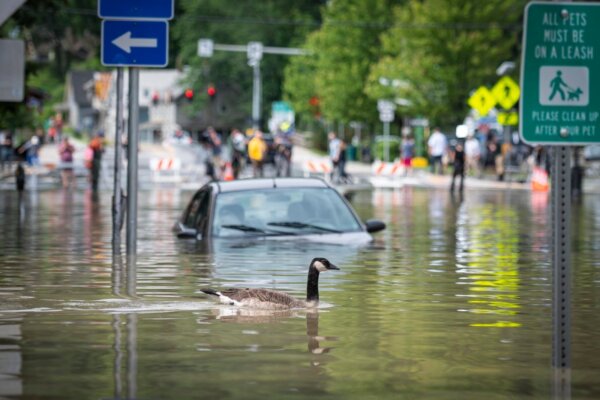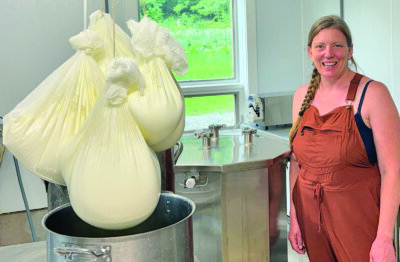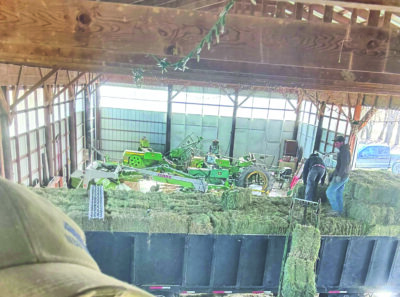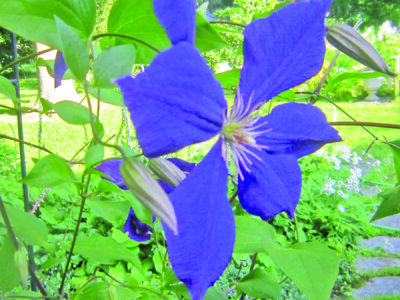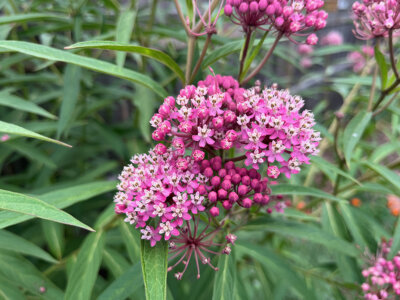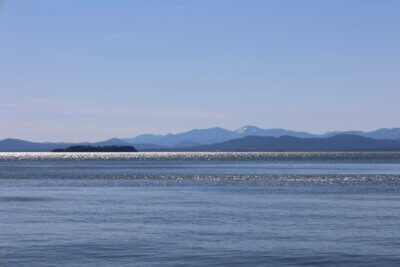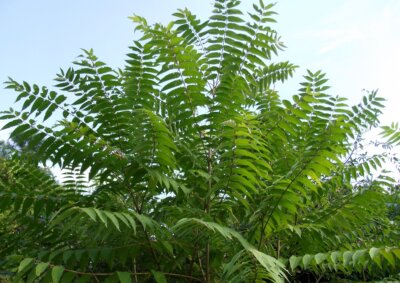In 1928, President Calvin Coolidge, a Plymouth-native, returned to Vermont to assess recovery after the devastating flood of 1927.
Many are now familiar with at least a portion of his remarks in Bennington: “I love Vermont because of her hills and valleys, her scenery and invigorating climate, but most of all, because of her indomitable people. They are a race of pioneers who have almost beggared themselves to serve others. If the spirit of liberty should vanish in other parts of the union and support of our institutions should languish, it could all be replenished from the generous store held by the people of this brave little state of Vermont.”
Here we are again, digesting the devastation of yet another flood not yet a dozen years after Tropical Storm Irene tore through the state. Damage from all three epic rains wrought havoc in similar, if not identical, places: Waterbury, Montpelier, Barre, Johnson, Ludlow, Plymouth, Bridgewater, Woodstock … and on and on.
We, more fortunate in Charlotte, can volunteer to help victims and contribute financially. It’s also a five-alarm notice to make changes in our lives to help slow these cruel changes to our climate.
Shelburne Farms can serve as an inspiration even if we can’t apply this knowledge in our own backyards. The farm has a goal of carbon neutrality organization-wide by 2028, an ambitious target but one toward which the non-profit is making progress.
Solar panels dot the landscape, and electric mowers and vehicles are replacing gasoline-powered ones. Mowing is less frequent. Grass is left longer inspired by the “raise the blade” campaign.
While some suggest that giving up meat is a solution, Shelburne Farms has a different view: “We believe that animals play an essential role in sustainable farming systems. They can generate food for people from land unsuitable for crops, like much of the sloping, stony acreage at Shelburne Farms, and they can help build healthy soils that sequester carbon and boost yields of pastures and cropland.”
Shelburne Farms is pursuing three strategies toward this goal with its cow herd: silvopasture, biochar and feed additives.
Silvopasture (silvo is Latin for forest) is the practice of combining trees, pastures and livestock. Trees shade the cows in hot weather and can sequester carbon both above and below the soil. Manure feeds the trees and silvopasture retains more water than a traditional pasture.
Biochar is a similar to charcoal and is produced from sustainable sources, like invasives (think buckthorn and honeysuckle). As a soil amendment, it contributes texture, absorbs minerals and nutrients, and can help retain water. Made by burning plant material, biochar added to the soil also removes carbon dioxide from the atmosphere.
Methane emissions from animals is a well-known problem and cows are significant contributors, mainly through their burps. Most of the gas is formed in the first chamber of the stomach, and so they belch it out. Researchers and farmers across the world, including at Shelburne Farms, are working together to develop animal feed that minimizes methane production.
Life in the milkweed patch
At this time each year I always hope to find monarch caterpillars on our milkweed plants. So far this year, no luck. But I noticed and then read about a phenomenon that amounts to common milkweed being a killing field for small insects.
Kent MacFarland at the Vermont Center for Ecostudies writes that milkweed “are not a carnivorous plant; trapping and death are just an accident. Instead, it has solved the problem of pollination in a unique manner.”
The long (very long) and short of it is that in order for an insect to collect milkweed pollen, it must stick a leg into a tiny slit in the flower. Small insects often do not have the strength to pull their legs out. Escape depends on leaving one or more legs behind.
Mink
When not contemplating the carnage of climate change or lamenting legless insects near our milkweed, I’ve entertained myself watching mink. They frolic on shore and swim with snouts just above the waterline, long tails leaving turbulence in their wake.
What do I know about mink? Other than that they can become fur coats, not a lot. American mink are part of the weasel family along with fisher, American marten, North American river otter, and long and short-tailed weasels, called ermine. Mink are aquatic with partially webbed feet, living beside bodies of water or in wetlands. Weasels have long thin bodies, enabling them to squeeze into snow or terrestrial tunnels in pursuit of smaller prey.
Aggressive carnivores, mink are agile predators on land or in water, both excellent tree climbers and swimmers. Their diet can include muskrats, rabbits, fish, crayfish, frogs, marsh-nesting birds, as well as smaller rodents and aquatic beetles.
May the balance of summer of 2023 bring more hope than heartache.
